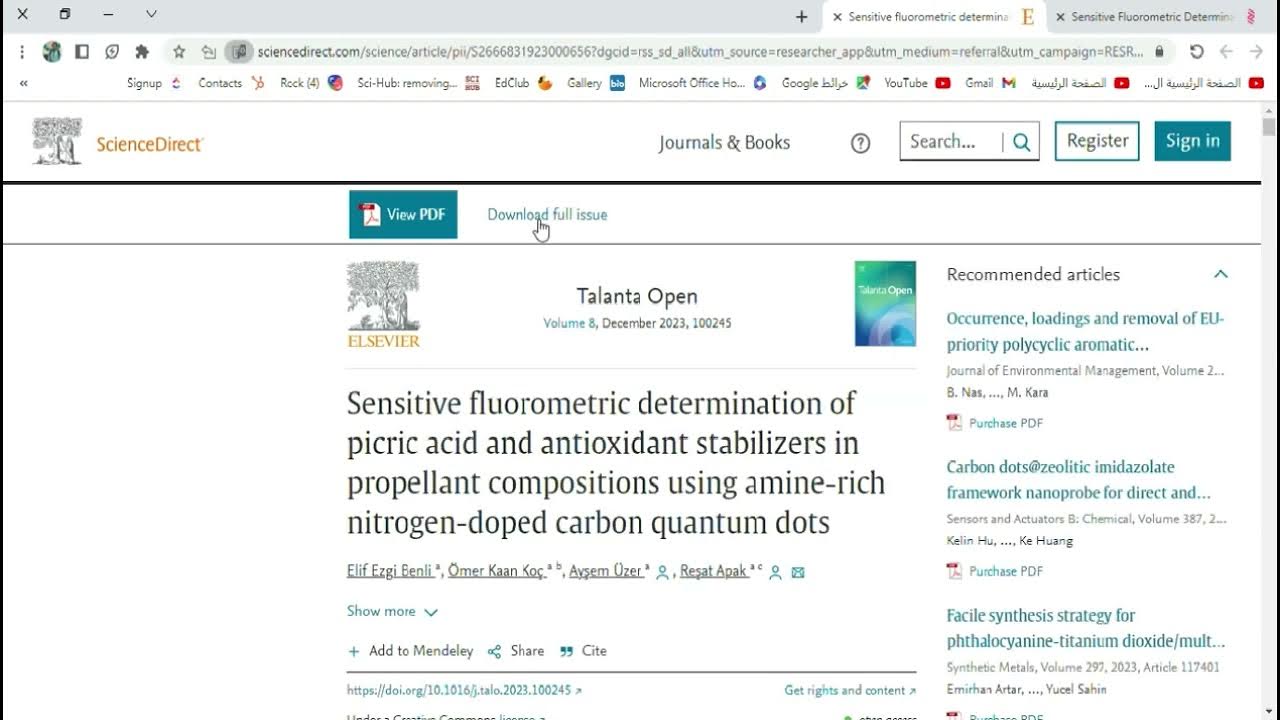Keys of Scientific Research Course: Lecture (12) Research Terminology Revision & H-Index
Summary
TLDRThe speaker, Abdullah Al-Wakeel, discusses the concept of H-index and its importance in evaluating the impact of a researcher's work. He explains how citations and publications contribute to a researcher's H-index, highlighting that a high H-index indicates a significant contribution to the field. The script also touches on how journals and papers are evaluated based on citation counts and the journal's impact factor. Examples like Dr. Ahmed Zewail and Dr. Mustafa El-Sayed are used to illustrate how top researchers achieve high H-index scores, emphasizing the importance of both quality and quantity in research output.
Takeaways
- 😀 The session recaps past lessons, particularly focused on the concept of citations and their importance in research.
- 📊 The concept of the H-index is introduced as a metric for measuring the impact and strength of a researcher or a journal.
- 📚 Citations are explained as a way of acknowledging the original source of information in academic writing.
- 🖊️ The distinction between citation and plagiarism is emphasized, highlighting the importance of proper attribution to avoid intellectual theft.
- 🔢 The H-index balances both the quantity of published research and how often these works are cited.
- 🎯 The strength of a journal is also judged by its impact factor, which is influenced by the number of citations its articles receive.
- 📈 The relationship between the number of published works and their citations is explored to determine a researcher's overall impact.
- 💡 The H-index is described as a useful metric because it considers both the number of publications and their influence, ensuring that a high citation count isn't tied to just one popular work.
- 👨🔬 The session gives real-life examples of researchers like Ahmed Zewail and Mustafa El-Sayed, who have very high H-index scores due to the consistent impact of their numerous works.
- 🔍 A researcher with an H-index of 150, for example, would have at least 150 papers, each cited at least 150 times, reflecting their significant academic contribution.
Q & A
What is the main focus of the video script?
-The video script primarily discusses the h-index, its significance in academic research, and how it measures the impact of a researcher's publications based on citations.
What is an h-index?
-An h-index is a metric used to evaluate a researcher's academic impact. It is determined by the number of publications that have been cited at least the same number of times as the h-index value.
How is the h-index calculated?
-The h-index is calculated by counting how many publications have been cited at least 'h' times. For example, if a researcher has 6 papers, each cited at least 6 times, their h-index is 6.
Why is the h-index considered important?
-The h-index is important because it reflects both the productivity (number of publications) and the impact (number of citations) of a researcher, balancing quantity with quality.
What is the significance of citation count in research?
-Citation count indicates how often a researcher's work is referenced by others, which is a key measure of the work’s influence and relevance in the academic community.
What does the script mention about high-impact journals?
-The script explains that high-impact journals typically have a stronger reputation and that articles published in them are more likely to receive a higher number of citations.
How does the age of a publication affect its citation count?
-Older publications generally have more time to accumulate citations. However, a recent publication may still be influential if published in a high-impact journal.
What is the relationship between publication quantity and research quality?
-The script emphasizes that publishing a large number of papers alone doesn't guarantee a strong h-index. The papers must also be widely cited, showing a balance between quantity and quality.
What is the role of plagiarism detection tools in academic publishing?
-The script mentions plagiarism detection tools like iThenticate, which help ensure originality in academic writing by detecting copied content and preventing intellectual property theft.
How does the script explain the concept of intellectual property in writing?
-The script explains that respecting intellectual property involves properly citing the original authors when quoting or using their ideas. Failure to do so constitutes plagiarism.
Outlines

Esta sección está disponible solo para usuarios con suscripción. Por favor, mejora tu plan para acceder a esta parte.
Mejorar ahoraMindmap

Esta sección está disponible solo para usuarios con suscripción. Por favor, mejora tu plan para acceder a esta parte.
Mejorar ahoraKeywords

Esta sección está disponible solo para usuarios con suscripción. Por favor, mejora tu plan para acceder a esta parte.
Mejorar ahoraHighlights

Esta sección está disponible solo para usuarios con suscripción. Por favor, mejora tu plan para acceder a esta parte.
Mejorar ahoraTranscripts

Esta sección está disponible solo para usuarios con suscripción. Por favor, mejora tu plan para acceder a esta parte.
Mejorar ahora5.0 / 5 (0 votes)






